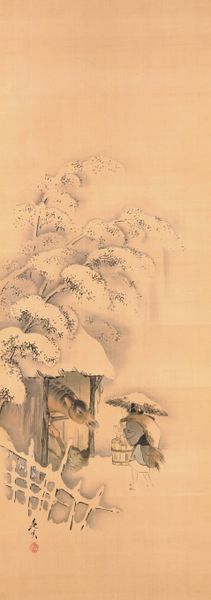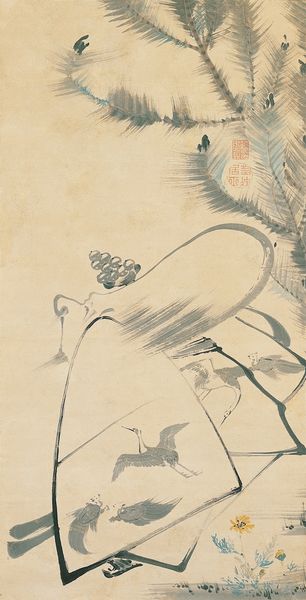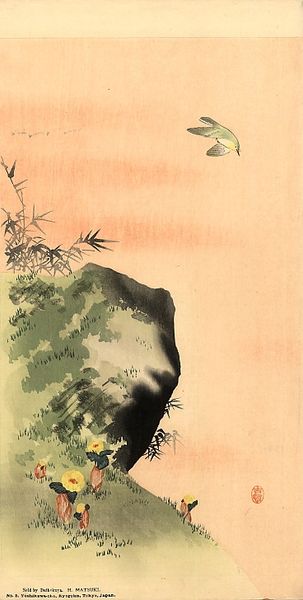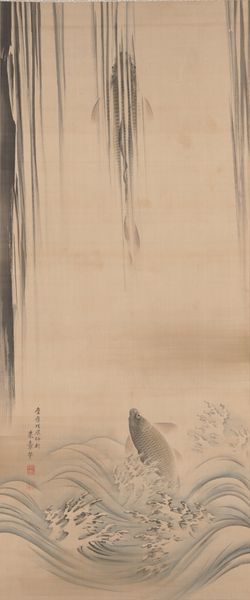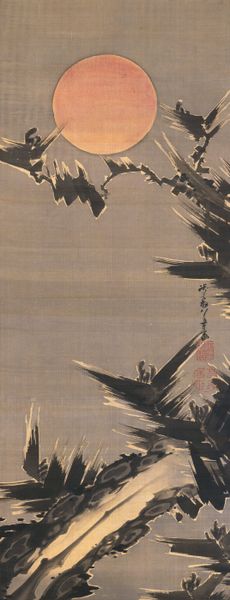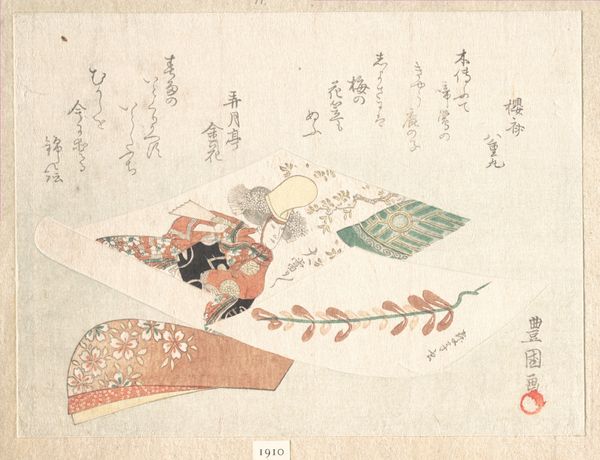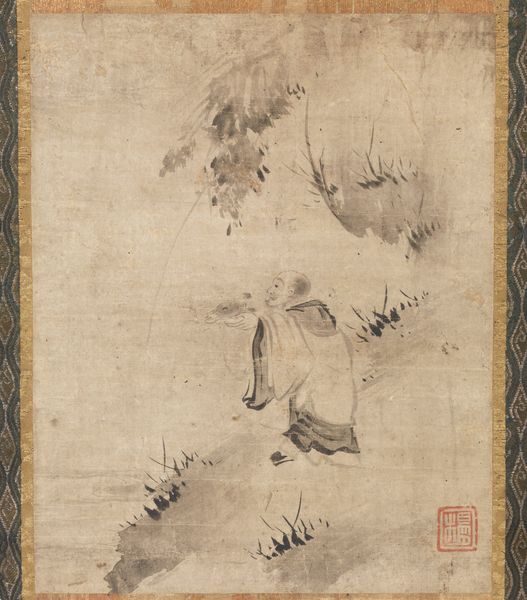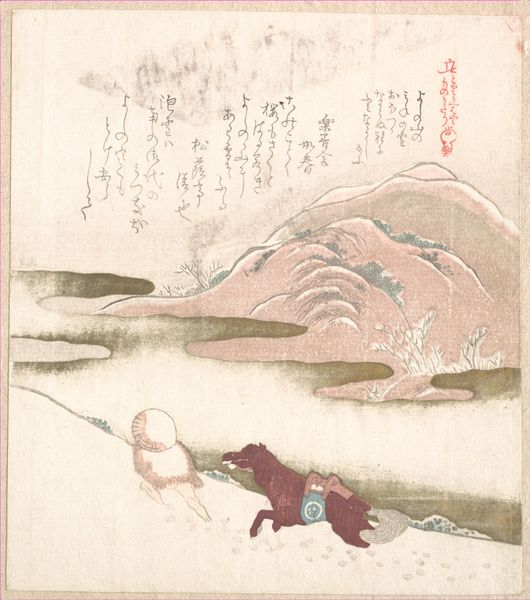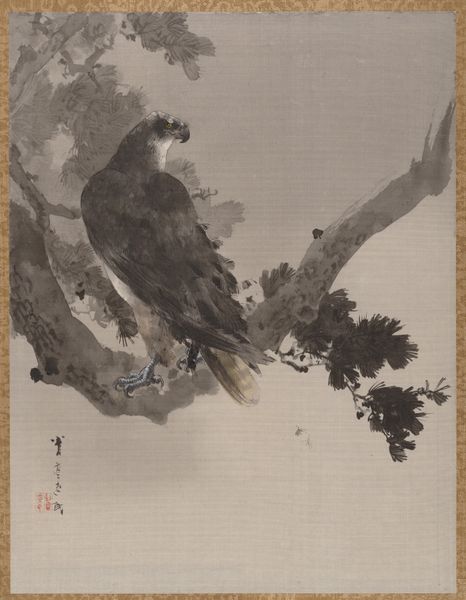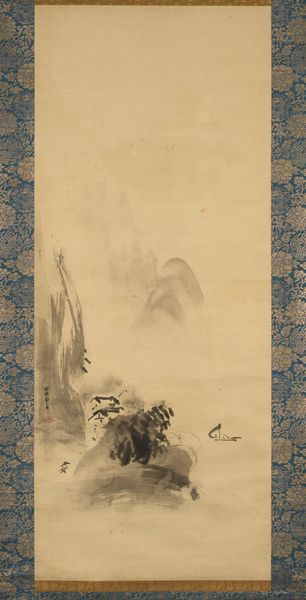
tempera, painting, watercolor, hanging-scroll, ink
#
tempera
#
painting
#
asian-art
#
landscape
#
japan
#
watercolor
#
hanging-scroll
#
ink
#
watercolour illustration
#
watercolor
Dimensions: 35 3/4 × 12 5/8 in. (90.81 × 32.07 cm) (image)74 1/8 × 18 5/16 in. (188.28 × 46.51 cm) (mount, without roller)
Copyright: Public Domain
Editor: Here we have Shibata Zeshin’s "Noh Play Hachinoki," likely from the 19th century, using ink, watercolor, and tempera on a hanging scroll. It's so serene, a solitary figure in a snow-laden hut. What story does this image tell? Curator: Well, on the surface, we see a humble dwelling buried in snow, reflective of a quiet poverty. But look closer—it illustrates a scene from the Noh play "Hachinoki," which romanticizes the samurai ethic of frugality and hidden valor. Consider when and for whom this was made; Meiji-era Japan was actively constructing a national identity rooted in carefully selected narratives about the past. Editor: So it's not just about the image itself, but how that image functions within a larger cultural framework. Was Zeshin commenting on this romanticized view? Curator: Possibly. Zeshin was an innovative artist acutely aware of both traditional techniques and Western styles. He wasn't simply illustrating the tale, but actively engaging with its ongoing social relevance, perhaps subtly questioning the idealization of poverty within a rapidly modernizing society obsessed with forging a sense of national unity. Notice how the starkness emphasizes a sense of hardship which aligns perfectly with how Bushido values austerity. Editor: I hadn’t considered the socio-political undercurrent. It really prompts you to look past the surface-level narrative! I wonder how contemporary audiences reacted? Curator: Exactly! The art world isn’t simply separate, but an arena of these very same issues, which gives greater depth to each interpretation. Editor: This completely shifted my perspective. Thanks so much!
Comments
minneapolisinstituteofart almost 2 years ago
⋮
Set in the mid-Kamakura period, the story of Hachinoki (“Potted Trees”) is a tale of loyalty rewarded. One snowy day, a traveling monk appeared at the home of the warrior Sano no Genzaemon-no-jō Tsuneyo and asked to stay. Tsuneyo initially declined as his family was too poor to host anyone, but at the urging of his wife, changed his mind. To keep the house warm, Tsuneyo sacrificed his prized bonsai trees—miniature plum, cherry, and pine—as firewood. Tsuneyo explained to the monk that his family had once owned a large piece of land, but a relative had usurped it. But despite his poverty, he avowed, he would immediately ride his horse to battle if the shogun needed him. A few days later, he received a mobilization order by the regent Hōjō Tokiyori. Arriving in broken armor and holding a rusty weapon, Tsuneyo endured the mockery of his peers when he was specifically called out to meet the regent. He then realized that the monk he had helped was Tokiyori. To show his appreciation, Tokiyori promised to return the lost land to him, and gave three estates for the three trees Tsuneyo sacrificed.
Join the conversation
Join millions of artists and users on Artera today and experience the ultimate creative platform.
